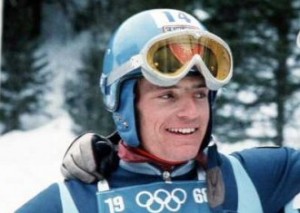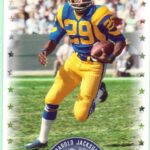Jean Claude Killy and His 1968 Winter Olympics Gold Rush

Jean Claude Killy was one of the brightest stars of the 1968 Winter Olympics.
It was the 1968 Winter Games—Grenoble, France.
The distinctive and enduring Olympic theme Bugler’s Dream , was introduced that year.
Drug and gender testing made it’s first intrusion into The Games.
A worldwide television audience viewed the spectacle for the first time in living color.
Two names, above all others, emerged from those Olympics to be indelibly etched in our hearts and minds:
Ageless US figure skater Peggy Fleming emphatically and beautifully declared to the world that American figure skating was back – after the entire US team was wiped out in a tragic 1961 air crash.
Dashing French alpine skier Jean-Claude Killy stole hearts—and at least one of his three gold medals—before a frenzied home crowd on the slopes of Chamrousse.
While Fleming’s story fairly drips with drama and significance, the telling of that tale on these pages will have to wait for another time.
Jean-Claude Killy was reared in the high ski country of Val d’Isere in the French Alps. As with many eventual sports heroes, Killy as a child often gazed through his classroom windows, hearkening to the distant call of his obsession. Truancy became a problem and his father eventually permitted him to drop out of school at 15 to pursue his dream.
A year later, Killy qualified for the French national junior team. He quickly developed a reputation for speed, but his reckless abandon prevented him from finishing many of his races. Still, at 19, he was chosen to compete in the giant slalom at the 1962 World Championships in Chamonix.
Three weeks before the championships, in typical hell-bent-for-leather fashion, Killy lost control near the end of a prelude race and went down hard. He bounced up immediately and crossed the finish line on one ski—still recording the fastest time!
It was soon learned his other leg was broken. Killy was reduced to an infirm spectator for the World Championships.
As part of a long range plan (looking ahead to 1968), the French ski coach entered Killy in the three (now five) men’s events at the 1964 Winter Olympics in Innsbruck, Austria.
Again Jean-Claude faced bitter disappointment. Battling amoebic dysentery and hepatitis, Killy fell early in the downhill and lost a binding in the slalom. He finished fifth in his best event, the giant slalom.

Finally, at the age of 22, Killy’s trademark speed and attacking style began to fuse together into a dynamic winning combination.
At the 1966 World Championships in Portillo, Chile, he won the downhill and combined.
Timing was everything in 1967. In January of that year the inaugural season of the World Cup series was introduced, just as Jean-Claude began to peak in his career.
He won 12 of 17 races, including all five downhills and four of five in the giant slalom. He was overall points leader in all three disciplines and easily won The Cup.
The following season, Killy’s devil-may-care assault on the 1968 World Cup was in full-glide as the Grenoble Games opened in February.
In that one year only, Olympic competition counted toward World Cup standings, so Killy viewed the opportunity to perform before his countrymen as an advantageous “next step” in his pursuit of world domination in alpine skiing.
In the downhill, Killy’s break-neck attack allowed him to just slip past teammate Guy Perillat by .08 seconds to win gold.
Then, in the giant slalom (which for the first time included two runs rather than one), a wider margin of more than two seconds secured another gold for Killy.
A “clean” sweep of the three events was not in the cards however, as controversy marred Killy’s third gold in the slalom:
Jean-Claude was leading after his second run. Norwegian skier, Haakon Mjoen then weaved his way down the slope in a quicker time, but was disqualified for missing a gate.
The great Austrian, and Killy’s chief rival, Karl Schranz followed with his second run. About mid-course, Schranz suddenly halted, as in the fog a mysterious figure crossed his path. The Austrian was granted a re-run and produced the fastest time. Schranz was declared the winner.
A Jury of Appeal later disqualified him for missing a gate and Killy was awarded the gold.
Jean-Claude Killy was only the second man to ever sweep the alpine skiing events since the legendary Tony Sailer.
Some say the echoes still reverberate from the slopes of Chamrousse in honor of France’s greatest sports hero. He was awarded the French Legion of Honor.

Before the closing ceremonies however, another controversy arose concerning Killy’s amateur status. At that time, any hint of commercialism or brand marketing was strictly forbidden.
Killy was not subtle in his post-race photos, allowing company trademarks to be clearly visible on his equipment. Alleged under-the-table payments for such favors were not easily proved.
In protest, IOC president Avery Brundage was conspicuously absent from the alpine skiing awards ceremonies.
Killy rode the momentum of his Olympic sweep to another World Cup championship in 1968. Then, at the top of his game, he retired from skiing.
Considering the marketing controversy at Grenoble, Killy interestingly became a spokesman and endorser for Head Skis, Schwinn Bicycles, Rolex and Chevrolet.
Between 1967 and 1970, he had a short stint as a racing driver, participating in the Paris Dakar Rally.
In 1972, at 29, Killy returned to skiing in the US pro circuit for one year and won the season title in 1973.
In 1995 Killy returned to the arena of his greatest glory and has been a member of the IOC ever since.
Jean-Claude Killy will forever be honored as one of the most memorable characters in Winter Olympics history.















